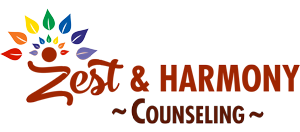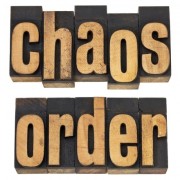Give Yourself Room to Move!
If you’ve ever moved from one house to another – and who hasn’t? – it’s probably one of your least-favorite things to do. It’s certainly one of mine! Just the thought of turning my entire life upside-down and inside-out for a month or more, hauling it all to a new place, and putting it all back together, leaves me longing for a cup of Tension Tamer Tea and a restorative hot bath and massage.
But that’s exactly what I’ve spent this summer doing – not once, but twice! We’d settled on a house that would serve us perfectly, but our own home sold before it was ready for us…so at the end of June we moved into an interim apartment, then picked up everything and moved into our new home on the first of August. The second move was a bit easier since everything was packed up and in storage from the first move, but ai yi, yi, the unpacking!
The whole process made me realize all over again: moving would be a breeze if not for one thing: STUFF. So that’s what I want to look at in this blog – the sheer amount of stuff we seem to accumulate, and how we can reduce it to live more lightly.
My husband and I thought we were living pretty simply – we’d only been in our house for less than five years, and we’re not big collectors. In fact, about three years ago, I learned how clutter can impact your wellness, and so every six months or so I take inventory of what is no longer serving me in life, and throw it out, give it away, or recycle it. No matter how many times I do it, I’m always surprised at how much stuff I can let go.
But this summer, when we were packing things up for our first move, we realized just how much STUFF we each had! So my husband and I each did a honest inventory before putting things in storage and did a serious purge, letting go of the things that we didn’t need and hadn’t used, the things that didn’t serve us.
“Easier said than done — Just how do you determine what serves?”
That’s a question I hear over and over…and it’s simpler than you might think! In 2011 I read Sue Rasmussen’s e-book, Your Inspired Office: a 30-Day Guided Journey, and she recommended the following when clearing out paper:
- Much of what you think you need to do, you do NOT need to do. Get very good at tossing that stuff. Don’t keep the “would be nice to do‟ or the “when I have time‟ stuff. You likely already have plenty with the really important things!
- Any paper older than one month old, consider tosssing it (you could even go to anything older than one week old.) If it needed to be handled and it’s a month old already, the time has past. If it’s a request from someone else and it’s important enough to them, they’ll ask again (in many cases, they will have moved on to something else and won’t even remember).
- Let go of the guilt and let go of the should’s as you are tossing.
She uses the gardening principles of weeding and thinning to identify the things that need to do:
- Weeding means getting rid of things that are not what you want.
- Thinning means getting rid of some of the good stuff, simply because there is too much of it, to create room for the very best to flourish.
Her e-book applies these principles to decluttering papers in an office, but Lovell and I used it across the board to clear out not only paper, but also clothes. books, CDs, etc…all those thing we were keeping for someday. If I hadn’t worn clothes or shoes in a year, I put them in the “give away” pile. If it had holes, tears, stains or missing buttons, I threw it out.
(If you have a hard time with the idea of loading up a landfill with slightly damaged but still serviceable things, see your local Salvation Army outlet or shelter – they will repair items before putting them up for sale. If items of clothing are truly unwearable, local animal boarding and shelter facilities will happily take them as pet bedding.)
But what if I’m not moving? Why go through the upheaval?
Just as you need a periodic cleanse to detox your physical body, a regular decluttering can detox not only your physical environment but also your mind, body, spirit, and energy body.
- The impact of clutter on the body – At the simplest level, clutter can cause or worsen allergies, sinus infections, and headaches by attracting dust, dust mites, and mold. At its worst – with serious hoarding – it can invite disease through insects and rodents and even endanger lives through fire and building collapse. At any level, clutter causes stress, causing your body to release cortisol (a hormone that suppresses the immune system), which can lead to weight gain and other health issues. (Click here for more information on the ways in which clutter affects your health).
- The impact of clutter on the mind – Being surrounded by clutter, mess, and disorganization can lead to an ongoing state of overwhelm, anxiety and depression in which you struggle to concentrate, focus on a topic, or follow a train of thought to its conclusion. As the site Unclutter, Organize, Transform points out, “Your outer environment is a reflection of what’s going on inside you, so when things are cluttered, messy, stressful, and overwhelming in your environment, you have a corresponding level of overwhelm and stress inside as well …”).
- The impact of clutter on the spirit – When you’re living with clutter, it depletes your energy, leaving you feeling heavy, fatigued, and listless. Your creativity evaporates, and you can feel as if your head were full of static. Your relationships suffer, and your sense of spirit-connection begins to fade.
Why? Clutter blocks your root and sacral chakras, where courage, grounding, and sense of purpose and creativity originate. Clutter is usually caused by a deep sense of fear – either a fear of lack (storing up against lack) or fear of attack (barricading yourself behind objects). In either case, there’s a great fear of letting go and opening to new ideas and experiences.
Even your flow of abundance can suffer when you’re living in a cluttered environment. By holding on to things, we’re not allowing space for things to flow to us. We are saying to God that we don’t believe our needs will be provided for – we don’t trust in the Universe.
Where to Begin Decluttering?
When clutter leaves you in a chronic state of overwhelm, it’s hard to see any pathway out of the mess. Fortunately, however, simple mind games and small, practical steps can help you to ease your way out of the anxiety that just the thought of decluttering can trigger.
- Real Simple offers these cognitive strategies:
- Envision your home as a prospective buyer might: Uncluttered spaces make the best first impression. They’re also a lot easier to keep clean and dust-free..
- Imagine the potential buyer (or, worse, a relative) going through your closets or drawers. What would you not want him or her to see?
- Buy containers and baskets only after you’ve decided what to keep. This way you’ll have a much better sense of the kind of storage you need.
- Start with a small space. Pick one area in your house: a room, an alcove, a closet, or a drawer. Feel into that space energetically – look at the space and everything in it and sense the “vibe” that it carries for you. Does it give you energy or leave you feeling depleted? Are there memories associated with it – good or bad? Is there a purpose for having it, other than the memories and (maybe) the guilt you feel about letting it go? How is it serving you now? Have you used it in a year – or three years? If it is depleting your energy and/or isn’t serving you, get rid of it.
- Set up three piles: Trash, Recycling, Donate, and Special Giveaway. Mark the Special Giveaway items for people who would appreciate them. Host an “Un-Birthday” celebration in which you give the items to your friends.
- Try to go paperless as much as possible.
- Stop junk mail! Here are instructions direct from the FTC
- When mail comes, go through it immediately or place in one spot and have a designed time of the week to go through your mail pile. Keep your mail pile close to your desk, with a recycle bin nearby to catch the discards
- Read magazines and newspapers online
- Pay bills online
- Invest in a high speed scanner and scan important papers
- If you have a smartphone, install apps to scan business cards directly into your Contact file, and receipts directly into your bookkeeping program.
- Before picking up a brochure, flyer, handout, etc., ask yourself: do I need this? Can I get this information by writing a note to myself on my phone and looking it up online later?
5. Get rid of anything that isn’t beautiful or useful.
Yes, decluttering can seem intimidating at first – but I promise, it gets easier when you make it a regular practice! If you’re especially anxious at the thought of starting, contact a organizational coach, such as Simply Organized Today to help you…or, if you are realizing that you have a hoard on your hands, contact Clutterers Anonymous
It is possible to create the space you need to move!




Leave a Reply
Want to join the discussion?Feel free to contribute!